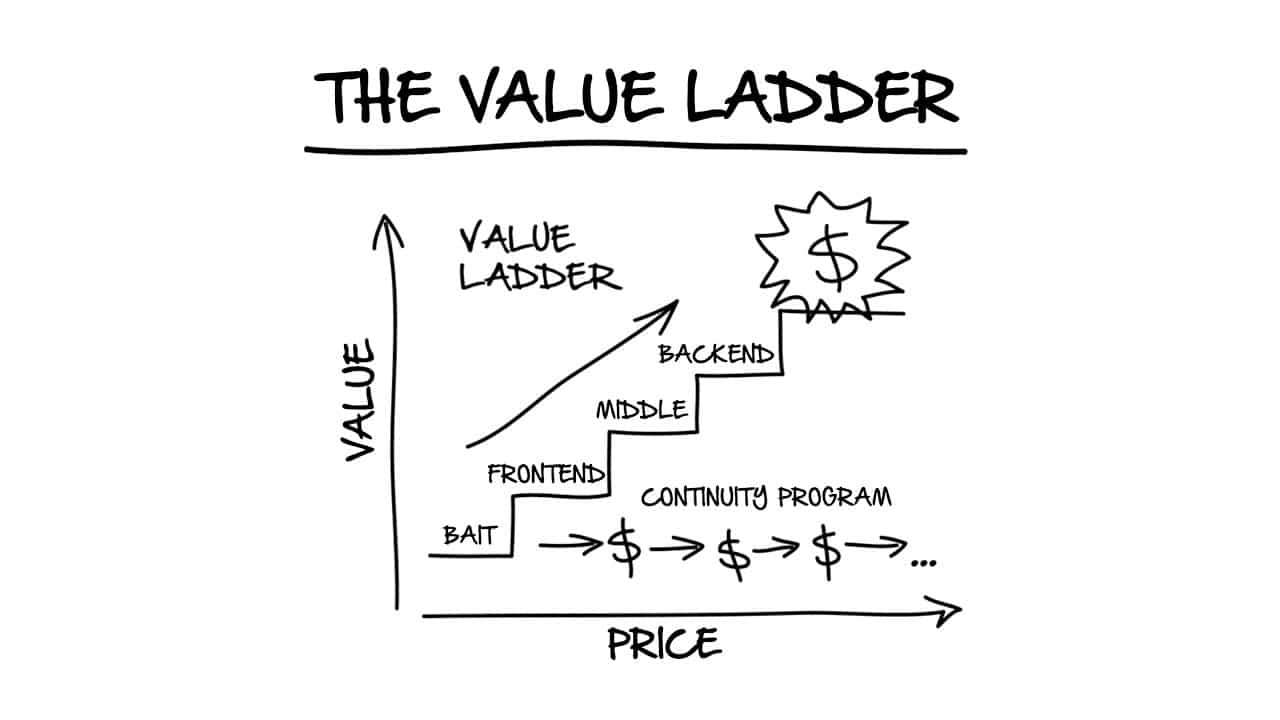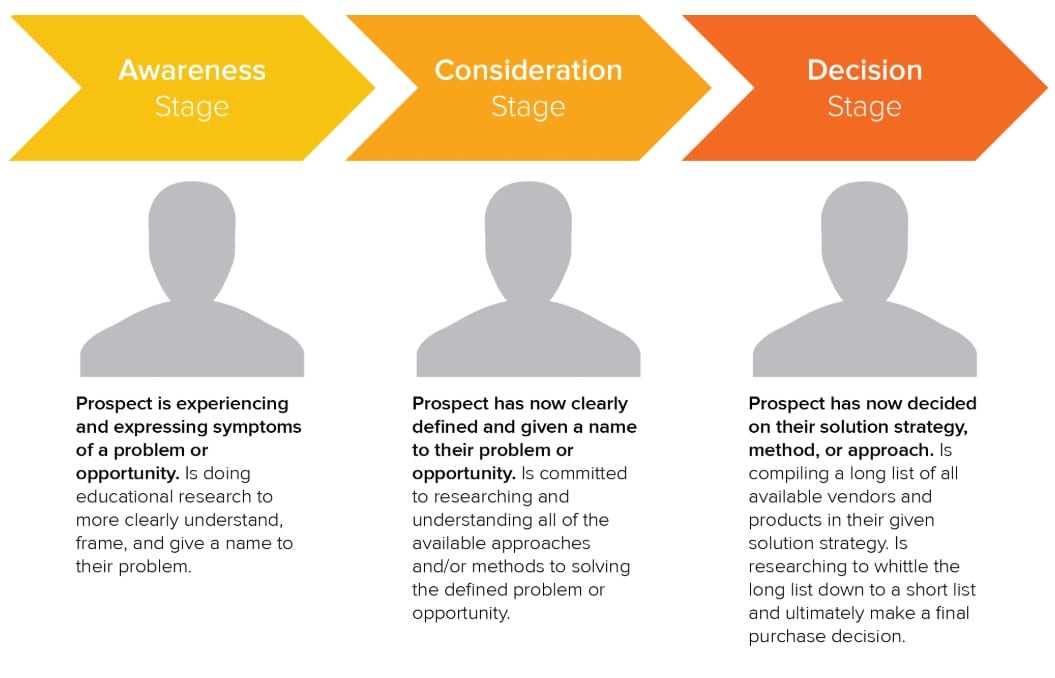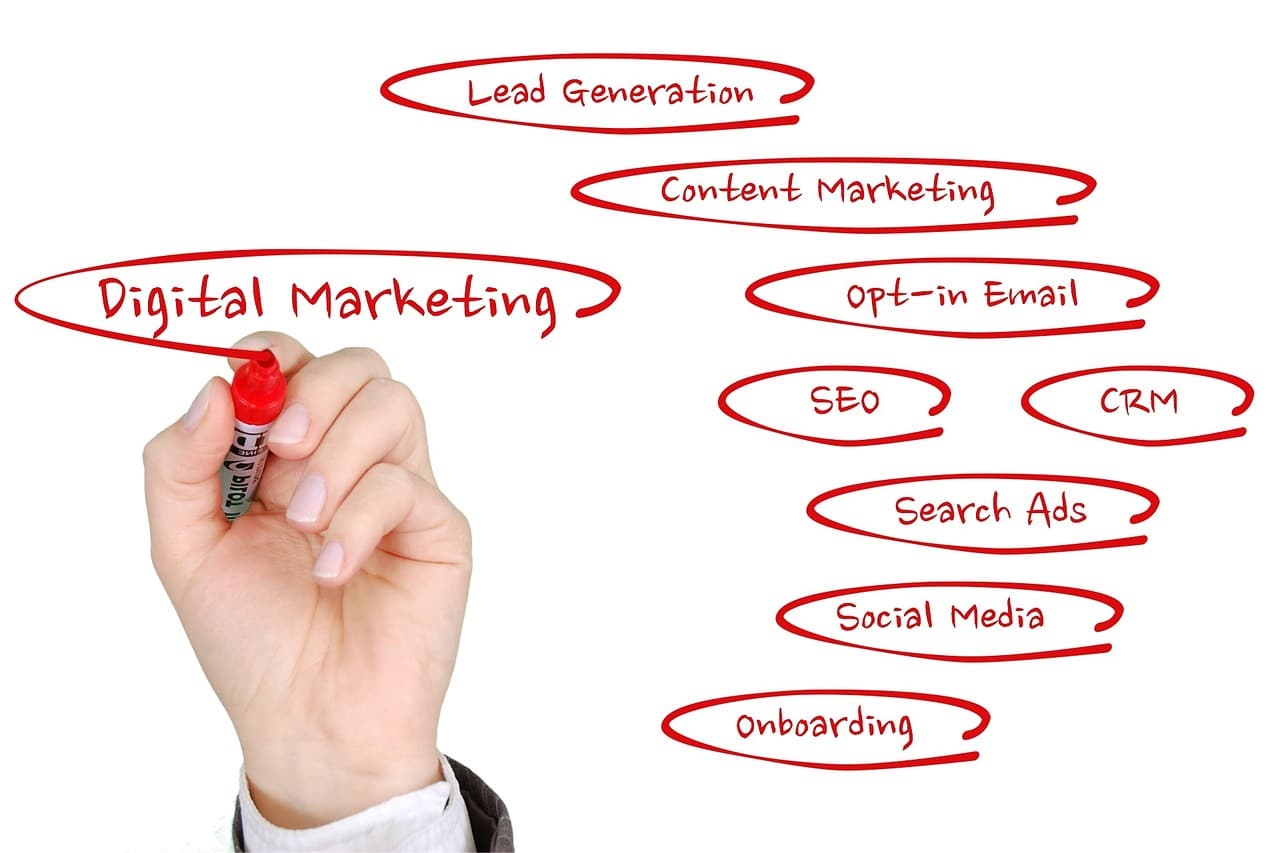Imagine this scenario. You score a meeting with the CEO of a company to which you want to sell your services. She opens the conversation by saying she’s never heard of your company and isn’t sure why she took the meeting. How successful do you think you would be? If you were to do your elevator speech and ask for the sale, your odds of getting a buy are extremely limited.
The B2B lead generation process can be complex and take time. Buyers do a significant amount of research often before ever engaging with sales reps. They typically involve multiple decision-makers that do extensive research before committing. They rarely buy on cold calls and they don’t buy from people that haven’t established trust and credibility. This is why leveraging the value ladder concept for your B2B lead generation strategy is crucial. So, let’s take a look at what the value ladder is and how you can begin using it to immediately improve your sales pipelines.
Table of Contents
ToggleWhat is The Value Ladder?
Trust and credibility grow as B2B buyers become more aware of your products and services and begin to engage with your brand. The Value Ladder from the “Dot Com Secrets” book by Russell Brunson says to think about the buyer journey as a series of steps. Just as you must take each step one at a time to reach the second floor of your home, B2B buyers also take steps one at a time. Brunson calls this moving up the Value Ladder.

Source: Dot Com Secrets
B2B buyers don’t jump up to the top step without going step-by-step. The first step in the Value Ladder might be responding to an offer for a White Paper on an industry issue or clicking on a lead generation form. When the prospect is ready to move to the next step, they might make a small purchase. If they’re satisfied, they move up a step. If you provide value at each step, the farther up the ladder they go, the easier it will be to get to the big sale.
Why is the Value Ladder Important for B2B Organizations?
The basic concept is that lesser offers earn leads. These leads eventually get upsold to higher-priced products and services. This step-by-step process nurtures these leads. As B2B buyers get more comfortable with your brand, you can incrementally move them to the next step. It creates a pathway to get to more complex sales.
This relates well with B2B inbound marketing methodology but can also be applied to the B2B sales cycle. This is where a union of marketing and sales can significantly accelerate leads if the value ladder is applied across all facets of the buyer journey from marketing to sales.

Source: Hubspot
It encourages more leads because you have smaller stepping stones for new customers to engage with you. You won’t turn off potential customers by pitching big-ticket items before they are ready. As their capacity and trust grow, you are able to provide value in a streamlined way that keeps the customer experience strong. It provides multiple touchpoints and opportunities for positive experiences which allows natural paths for upsells to occur.
It also drives more leads into the sales pipeline as a direct result.
How to Use the Value Ladder in Your B2B Marketing & Sales
The value ladder strategy applies to both your B2B marketing and B2B sales tactics.
The Value Ladder in Marketing
At the bottom rung of the sales ladder, consider offering free information. You might create offers such as eBooks, White Papers, fact sheets, brochures, or thought leadership articles.
As you move people up the value ladder, you need to ask for something in exchange for providing valuable information. These become test buys to see if potential customers can become qualified leads.
For example, applying the value ladder strategy in your email campaign might start with getting them on the line early with minimum opt-in info. You would then provide high value and undertake to understanding their needs. After each successful conversion, ask for more information in exchange for more added value.

Here’s how it might work. A newsletter subscriber gets an offer for a free webinar. Attending the online webinar would “earn” participants a free audit. When they go for the audit, you take a deeper dive into the customer’s challenges and offer basic products or solutions. When they buy the solution and have favorable outcomes, you get an easier upsell for the next tier of sales.
Not only is this an effective way to grow your sales over time, but it also has the added benefit of making it difficult for competitors as they are starting on the bottom rung of the value ladder. You’re already a step or two ahead.
The Value Ladder in Sales
Some organizations are limited by what they can offer in the sales process, in which case they can lean on marketing (or an external marketing team) to do the heavy-lifting on more refined content to help pre-qualify leads for sales.

The end goal is to provide refined channels of prequalified leads to the sales team with a detailed background of what makes that lead “tick.”
From the sales perspective, offering a demo or presentation of a service or SaaS solution can be a good value ladder step to add to your sales process. Discovery calls can get tiresome for you and the prospect. This step lets you frame a specific part of what you offer and get the lead more in touch with that early on. It can help build the trust that garners long-time customers.
Build an inventory of support material for each stage of the buyer journey. This includes Data Sheets, Fact Sheets, Brochures, or Videos to showcase what you do and what you can offer in a quick and accessible format. Integrating these into your sales process helps make the information easily accessible when you’re trying to break through to key decision-makers.
Re-Frame Your Discovery Calls
It may seem counter-intuitive not to ask for the sale when you’re engaged with a prospect. Asking for the sale before the prospect is ready, however, can stop the sales process altogether. Instead, re-frame the delivery of your discovery calls. There is great insight to be learned from the power of listening. Approach sales calls from a consultative point of view. Instead of pushing the decision-maker to buy on the lower rungs of the ladder or push for the next appointment, listen to their needs and offer to provide valuable information at your next meeting.

In short, understand their problem and present a solution.
Creating assets for your sales cycle can help you better articulate the value at each step and move prospects up the value ladder. It can also help get that next appointment established. If I listen to your problems and tell you I have a solution that will solve your problem, wouldn’t you want to hear about it?
Using the value ladder strategy, you’re getting the next appointment in exchange for providing deeper insights and a possible solution for the customer. In this way, the discovery call is just the first step up the value ladder. After you return with information about the solution, you might offer a free trial or demo of your product in exchange for feedback.
At each step, you’re asking the prospect to make a commitment and then delivering value back to them. This give and take establishes trust and credibility and can lead to long-term customer relationships.











